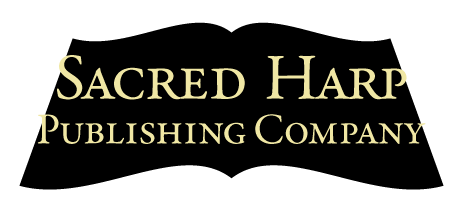
Bethehem Primitive Baptist Church is the site of the 5th Sunday singing in Old Chicora, FL. Photograph by Peggy A. Bulger, State Archives of Florida, Florida Memory, http://floridamemory.com/items/show/119633.
Old Chicora, located approximately 40 miles southeast of Tampa, FL, on the far eastern edge of Hillsborough County, has been home to Sacred Harp singing since the late 1800s. Bethlehem Primitive Baptist Church has been the site since the early 1920s, hosting singing every fifth Sunday from 10:00 am to 2:30 pm, with dinner on the grounds at noon. Most years have four months with five Sundays, but this year we were fortunate to have five.
The congregation was incorporated in 1871, but singings weren’t held in the church until May 1924. The earliest singers met in homes, and later at the Johnson School about 2 miles away from the present site. (The schoolhouse is no longer standing.) The first church building was constructed of logs. (One singer recalls hat racks on the walls, in an era when men wore hats and suits to most public events.) The present concrete-block structure was constructed in 1960.
In years past, Sacred Harp singings were also held in nearby areas of Central Florida, including Vero Beach and Winter Garden. The latter was home to the Florida State Convention before it moved to its current home in Panama City.
As with any activity in Florida, attendance varies with the season. In recent years, attendance in winter has been as high as 45, and attendance in the off-season averages 20 to 25. We’ve been fortunate to have the occasional participation of singers from the Tallahassee and Gainesville (Micanopy) areas as well as Georgia.
This past April, I was among 20 or so singers at Bethlehem. Though our group wasn’t large, we had a good day of strong singing. As usual, I led “Exhortation” (p. 171 in both The Sacred Harp, 1991 Edition and the Cooper book). When leading this song at Bethlehem—a Cooper book singing—I bring printouts from the 1991 Edition, which has two verses (Cooper has only one). In my early days singing here, this song was unknown to most of the group—but it is now a well-known part of our repertoire.
I discovered the Old Chicora group through fasola.org soon after purchasing a second home in the Sarasota area in 2004. For several years, while working in New York City (my introduction to Sacred Harp), I planned regular Florida “mini-vacations” to coincide with the fifth-Sunday singings. Now actively retired, I frequently travel to sing wherever and whenever the Spirit leads (and finances allow), but have a special bond with Bethlehem.

The late M. Lane Albritton, moderator (for many years) of the Bethlehem singing, leading in August 1979. Photograph by Peggy A. Bulger, State Archives of Florida, Florida Memory, http://floridamemory.com/items/show/119861.
Many of the Bethlehem singers have roots in Sacred Harp singing in the area going back several generations. Moderator Janice Clenney has attended singings for over 70 years, first as a small child accompanying her parents. Her maternal grandfather Jesse Arthur Albritton sang Sacred Harp. When Jesse’s daughter Ella Mae (Janice’s mother) married Uriel Benton, Jesse requested that his new son-in-law bring Ella Mae back for singings, and Uriel did so faithfully.
Janice’s earliest Sacred Harp memories are of playing with her dolls on the floor near her family while they sang. When she heard “Send A Blessing” (p. 369), she knew it was time for dinner. (The tradition of singing “Send A Blessing” before breaking for the meal continues today.) Janice’s husband Jeril accompanies her to the singings, and their daughters and granddaughters are often with them.
Ernestine Albritton Mann Stalvey, age 90, has also been singing Sacred Harp in Bethlehem since she was a small child accompanying her parents. Her father, Jefferson F. Albritton, was Jesse Arthur ’s brother. Ernestine’s son Terry Mann and daughter Claudia McCormick now bring their mother to the singings, sometimes with Claudia’s daughters.

The late Iris Albritton Yarbrough, leading at a Bethlehem singing in August 1979. Photograph by Peggy A. Bulger, State Archives of Florida, Florida Memory, http://floridamemory.com/items/show/119635.
Eileen Moody and LeeAnn Aycock are sisters who sing at Bethlehem. Their late mother, Iris Albritton Yarbrough, shown leading in 1979 in the attached photo, was Janice Clenney’s aunt.
Joining this stalwart supporters of Sacred Harp singing in our area this April were some singers. Among these was Kathryn Keller, who was introduced to Sacred Harp in a class at a junior college in the Gainesville area. Her teacher was Pat Morse, moderator of the Micanopy Sacred Harp group. James Kushner, also in attendance, was introduced to Sacred Harp while in school in Southern California, and has been singing with Central Florida groups since the late 1990s. We were also joined by some first-time visitors. Among these were two retired couples; one couple rides their motorcycles all over the country (and had ridden them to the singing that day)!
A meaningful part of every Bethlehem singing—in addition to the music and fellowship—is dinner on the grounds. To cover the table, the Clenneys bring tablecloths made from feed sacks that have been in the family for generations. These tablecloths are made from bright cotton prints, large squares stitched together and laid end to end. Some women remember, as children, wearing dresses their mothers sewed from feed sacks. (Younger readers may not be familiar with the bright, colorfully patterned, high-quality cotton material that feed sacks were made of back in the day.)
The Central Florida fifth-Sunday singing warmly welcomes singers from near and far to join us. But our winters are especially inviting to northerners, midwesterners, northeasterners (etc.) tired of digging out of snowdrifts and shivering in below-zero temperatures.













